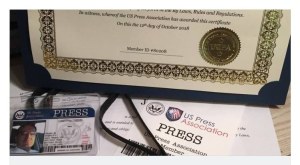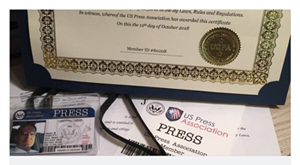A Christmas morning car accident occurred in Santa Fe, NM at the intersection of St.Francis Drive and Cerrillos Road. No fatalities have been reported as yetA7300873.jpeg
[Submitted by Scott Fischer]

From the moment of our inception, a troubling trend has emerged—imitation websites attempting to pass themselves off as us. We'd express flattery if the consequences weren't so detrimental! These deceptive websites craft elaborate facades, weaving interconnected webs of "press agencies" peddling counterfeit credentials labeled as "press passes." They showcase so-called "publications" to lend an air of legitimacy, creating the illusion of a "pseudo media conglomerate." However, their true aim is to attract individuals, exploiting their work to create an appearance of activity. This is never the ethos of the US Press Association (The USPA).
At the core of our mission is the commitment to drive visitors, viewers, and listeners to your site or social media profile. Joining our organization isn't about us; it's about bringing out the best in you.
The reality is, these imitators lack expertise and understanding. While they may convince some to purchase their deceptive products and showcase a handful of members on their site, these numbers pale in comparison to the vast member base that has chosen to trust us—the original, the authentic, The US Press Association. These sham sites and their operators are eager to uncover our operational secrets.
Why the curiosity? The answer is simple—our dedication to serving and assisting freelance and professional journalists, spanning close to two decades. In contrast, these pop-up websites have a fleeting existence, with some managing to deceive for only a few years.
The surge in these fake "press agencies" is leaving a lasting mark on the integrity of freelance and professional media organizations. Many of these websites are essentially one large web controlled by a few individuals. They establish a business structure and register an office in a state like Nevada, while operating from locations outside the United States, such as Germany, Russia, and others. While residence in other countries is not an issue, the problem lies in the deceptive web they cast to ensnare unsuspecting individuals.
These fraudulent sites entice people with alluring phrases like "get your backstage pass," falsely suggesting that possessing writing, video, or photo access automatically grants backstage privileges. At the US Press Association, we believe in honesty. We educate our members, especially those starting out, about the expectations when securing press passes for specific places or events.
"We need to take a stance against this type of deceptive practice."
We refuse to engage in luring, lying, or cheating to gain members. Our community is built on solid, informed decisions by individuals who chose an organization aligned with their values. Stand with us, and rest assured—we always have the best interests of our members at heart.
Stand with us. Become a member today.

Example of imaging used to lure and entice prospective members.
Stand with us. Become a member today...

Looking for content for your website or blog? Consider the USPA as your source to provide rich, industry specific writing, photos, video and other content for your company, website or blog.
With thousands of members globally, you are sure to find the perfect match for your specific niche!
Simply click the link below to answer a few simple questions that will help us find the right matches for you.
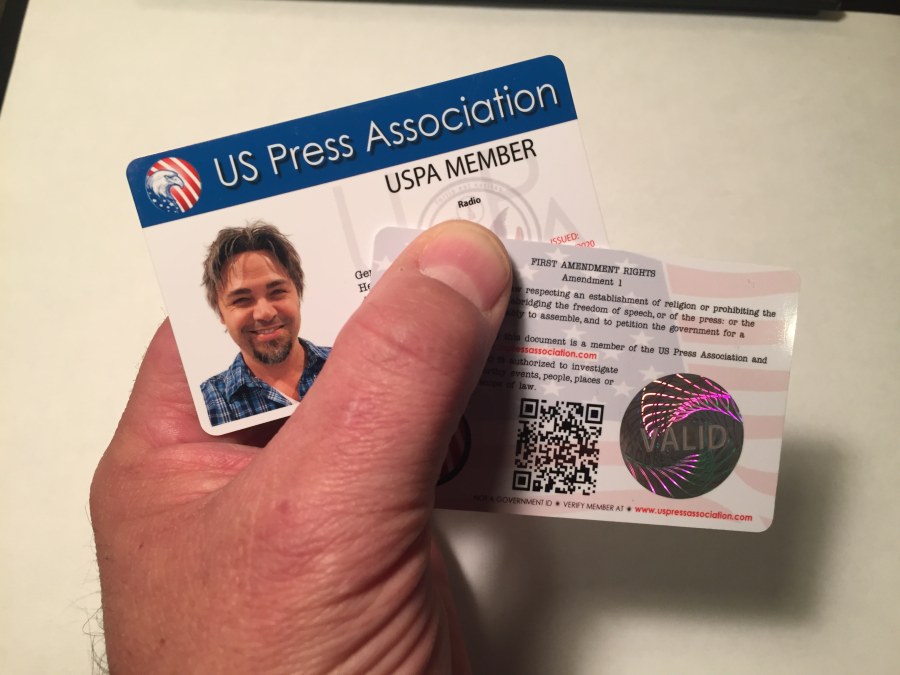
Are press passes free?
This is actually a very good question. It can also bring to light other details regarding various definitions and details about (press passes, press credentials, media passes) and the like.
Press passes can be both free or have some sort of fee associated with them either directly or indirectly.
If you are speaking about a press pass or press credential that is issued by the possessors employer, this type of press pass would be issued to the holder in all probability at no charge as they would be using such a credential/identification in the course of their job function(s).
A press pass and or press credential can also be issued by an organization or association (trade group/website). This type of press pass would likely be issued as part of their association membership which usually has a professional fee or membership cost associated with joining.
If you are referring to a press pass, media pass, VIP Pass, venue pass, backstage pass, this type of credential is typically issued for free by (venue management, managers, artist management, PR) or other individual or group that is in charge of the venue or event. This issuance of this type of media pass is usually dependent upon the individual requesting the pass having a pre-existing press pass or media credential. It is the possession of a press pass, media pass that lets the individual or group that issues event type passes know that the inquiring individual has some establishment of a role in media/new media.
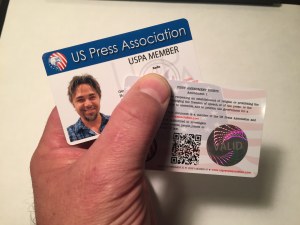
The US Press Association "USPA" issues a press pass to it's members as part of it's proprietary industry membership packet. USPA credentials and press pass are issued to a member regardless of the membership packet an individual chooses.

South Carolina is known as the Palmetto State. The state is known for the University of South Carolina, South Carolina State University, Clemson University and other institutions of higher learning. Myrtle Beach, Charleston, and Beaufort are all tourist destinations for travelers from around the globe.
South Carolina is known for something else.
South Carolina is known for its many potholes and bad road conditions.
A 2019 report from TRIP, a nonprofit transportation research foundation, provides a look into the conditions of South Carolina roads. TRIP researches all roads in all 50 states and U.S. territories. The report about South Carolina road conditions and hazards paints a bleak picture.
Read More: Click here
Many in t he Palmetto State were upset with the South Carolina Department of Transportation (SC DOT) for various reasons.
he Palmetto State were upset with the South Carolina Department of Transportation (SC DOT) for various reasons.
On Valentine's Day, multiple state agencies put out messages that upset many South Carolinians. SC DOT put out a Valentine's Day message that caused outrage among South Carolina citizens. Does such pictures how that the SC DOT is out of touch and doesn't understand the current pothole situation in the state?
As the screenshot to your left shows, some in South Carolina found it strange how a state that is notorious for having potholes would have the same state agency charged with fixing those potholes making Valentine's Day jokes. While some may find this to be funny or cute many in the Palmetto State were outraged by this message.
How committed is SC DOT to fixing potholes if the very potholes the SC citizens are complaining about are the subject of jokes on holidays?
When The Daily Counter saw this Facebook picture we decided to take a deeper look into the road condition situation in the state based on the 2019 TRIP report.
The findings from that report and other sources of information were disturbing.
Damion Lee Covington, a South Carolina truck driver, provided a statement to The Daily Counter.
"My question is will they get all this money from the state what do they really do with that money. A lot of cities (in South Carolina) do not take care of the roads this is the reason why it is in horrible condition," said Covington.
S.C. Rural Road & Bridge Conditions
According to the report, South Carolina ranked #1 in the nation for the most rural road fatalities:
"The rate of traffic fatalities on South Carolina’s non-Interstate, rural roads is the highest in the nation and is nearly four times higher than the fatality rate on all other roads in the state – 3.6 fatalities per 100 million vehicle miles of travel vs. 0.98. The report finds that 40 percent of South Carolina’s rural roads are rated in poor or mediocre condition. Nine percent of South Carolina’s rural bridges are rated as poor/structurally deficient. Bridges that are poor/structurally deficient have significant deterioration to the major components of the bridge and are often posted for lower weight or closed to traffic, restricting or redirecting large vehicles, including agricultural equipment, commercial trucks, school buses and emergency services vehicles." Read More: Click here

As the report stated, rural bridge conditions are in horrible shape in the Palmetto State.
This isn't good news for South Carolina farmers who rely on rural roads for transportation of goods. Many South Carolina truckers have a hard time navigating crumbling and broken roadways. When the roads are already in bad shape the added weight of 18-wheelers transporting farm-grown goods can make matters worse.
When the roads begin to break down in rural South Carolina that means that drivers, especially truckers, will find themselves having to purchase new tires more often. Those rural communities, like most U.S. rural communities, are not going to be as affluent as the urban areas. If there is a break down in road conditions that rural South Carolinians utilize daily then there is lost money on tire maintenance, time lost from replacing a busted tire and this hurts truck drivers.
Road Congestion

The study reveals that South Carolina roads experience congestion that many states don't match.
Nobody needs to read the 2019 TRIP report to get a good grasp of how bad congestion is on S.C. roads. All someone would have to do to review the bad road conditions is to review the 2017 TRIP report from 3 years ago:
"Mounting congestion robs drivers of time and fuel. Annual time wasted in congestion for drivers in the state’s largest urban areas is Charleston – 41 hours; Columbia – 38 hours; Florence – 11 hours; GSA Metro Area – 20 hours; Myrtle Beach – 30 hours."
Many South Carolinians have suspected that this is because the state has never really taken the right precautions for certain events.
For example, on August 20, 2017, The State Newspaper reported that the S.C. government and law enforcement officials couldn't seem to handle an influx of visitors. These visitors came to S.C. to view a solar eclipse. There were lane closures, major accidents, and warnings issued by the state's Department of Transportation.
Read More: Click here
The problem with congestion got so bad that S.C. Senate formed the Interstate Cooperation Subcommittee. This subcommittee is supposed to address the issues with interstate road conditions and issues such as congestion, maintenance, and construction. The committee is comprised of Sen. Mark Willis Jr. (Chair), Sen. JA Moore (1st Vice-Chair), Sen. Leon Gilliam (2nd Vice-Chair), Sen. William Bailey, and Sen. Kambrell Garvin.
Interstates 20 and 26 are well known for having high levels of congestion. Traffic jams can occur even outside of what many South Carolinians refer to as, "the witching hour of 5 PM." Due to the single-lane roads in areas such as Saint Andrews and Two Notch Road, a single traffic accident can cause a 3 to 4-hour delay. This may not seem like a long time but first responders have to navigate through a parade of vehicles on roads that aren't wide enough or are single-lane.
Crumbling S.C. Bridges
The report stated that 10% of all South Carolina bridges are "structurally deficient".
More troubling, the report also stated that S.C. bridges are deteriorating or have deteriorated in major components. This part of the report may not shock many who live in S.C. Bad bridge conditions are a fact of life in the state. The bridges in South Carolina are so bad that bridge collapses have claimed the lives of innocent people.

For example, in 2018 46-year-old truck driver Travis Hall lost his life. Hall was driving across 4 Holes Road overpass in Orangeburg. S.C. Highway Patrol admitted that the bridge was severely damaged and contributed to Hall's death. This overpass is located on Interstate 26. That Interstate highway is one of the most used in the state. If a bridge collapses or is significantly damaged this could pose a threat to the safety of South Carolina drivers.
Read More: https://abcnews4.com/news/local/overpass-on-i-26-partially-collapses-in-fatal-orangeburg-tractor-trailer-wreck
Orangeburg, S.C. is mostly a rural city. This matches what the TRIP report said about rural roads and bridges and much of the roads in S.C. SC
SC DOT and others ignored the warnings given by the 2018 TRIP report.
SC DOT closed down the overpass for repairs. Is it possible that if SC DOT fixed the overpass which has long been an issue that Travis Hall, described as a hard-working truck driver, would still be alive? How could a bridge collapse, someone dies due to negligence of road maintenance and yet everyone keeps their job?
The Cost to South Carolina Drivers
The Trip report revealed something troubling for SC Drivers who drive in a state where income levels don't match most other states. The report stated that almost half (45%) of all major roads in the state were in poor or mediocre conditions. Keep in mind that TRIP conducts reports for all 50 US states and didn't give this report for every state. Here is a quote from the report:
"Forty-five percent of South Carolina’s major roads are in poor or mediocre condition. Driving on roadsin need of repair costs South Carolina motorists $2.1 billion a year in extra vehicle repairs andoperating costs – $557 per motorist." - 2019 Trip Report
Imagine for a second that there is a situation where someone is paying taxes for road conditions. Now, imagine that person having to pay for repairs to their vehicle while also being in a relatively poor state like South Carolina. This cannot be good for a taxi driver, rideshare driver (Lyft, Uber, etc.), truck drivers and other professions who rely on good roads to make a living. This isn't just costing SC taxpayers billions of dollars but also costing professional drivers.
A rideshare driver who uses companies like Uber and Lyft has to pay for their vehicle maintenance. What would be the point in trying to drive to make money as an Uber driver if someone has to pay for vehicle maintenance plus gas (congestion) in a state where rideshare rates are lower than average?
Conclusion
The 2019 TRIP report revealed other major issues. For example, the report stated that traffic will increase on SC roads.
If the SC DOT, SC General Assembly, and the SC Governor Henry McMacmaster haven't solved the problem of crumbling roads in the Palmetto State then one would be forgiven if they believed the road situation will claim more lives, cost SC drivers more money and make the state a laughing stock.
Perhaps the SC General Assembly and SC DOT should realize that they have to use these roads as well. If nothing else, fixing the roads should be a priority due to self-preservation.
[Submitted by Dion McNeil]
---
https://thedailycounter.com/s-c-roads-are-dangerous-decrepit-2019-study-says/
https://thedailycounter.com/wp-content/uploads/2020/02/Untitled-15.png

“Seclusion and restraint.” It probably isn’t a term with which most people are familiar. If the unfamiliar person were to wager a guess at just what exactly does “seclusion and restraint” mean, images of maximum security prisons or the interrogation of terrorism suspects might come to mind. Cooper Stephens is all too familiar with the term; yet, he isn’t an inmate or a terrorism suspect. Cooper is an unassuming 13-year-old special education student in the Calvert County Public School System. In two words, Cooper describes the seclusion room where he was held: “It’s hell.”
Media attention has recently focused on the issue of seclusion and restraint in Fairfax County, VA schools. According to a report on WAMU-FM, the school system failed to report hundreds of cases of seclusion and restraint to the federal government, and special needs children were traumatized by repeated acts of seclusions at the hands of school personnel.
Calvert County, MD, nestled on the western shore of the Chesapeake Bay, may not have a lot in common with Fairfax County, VA. But, when it comes to the school’s practice of seclusion and restrain on students with disabilities, things begin to look a lot alike.
The Code of Maryland Administrative Regulations (COMAR) defines restraint as “a personal restriction that immobilizes or reduces the ability of a student to move the student’s torso, arms, legs, or head freely.” Seclusion is “the involuntary confinement of a student alone in a room or area from which the student is physically prevented from leaving.” Together, these practices are known as “Student Behavior Interventions.”
Cooper and his father, Guy Stephens of Lusby, MD, allege that Cooper was subjected to both restraint and seclusion at Calvert County Middle School on a number of occasions during his first fourteen days of the 2018-2019 school year. The Stephens contend that the experience was so traumatic to Cooper, that after only three weeks of attendance at the school, he was unwilling to return. He is now receiving education through “Home & Hospital Instruction.”
Cooper was subjected to both restraint and seclusion at Calvert County Middle School on a number of occasions during his first fourteen days of the 2018-2019 school year.
Guy Stephens explained that Cooper had a positive experience in the Calvert County Public School system from first grade until the mid-year of fifth grade. Cooper, who started first grade in what is today called an “SLE” special education program, progressed remarkably well, particularly with the support of a favorite teacher with whom he was with for two and a half years. By the middle of fifth grade, Cooper was in regular “inclusion” classes for all but one subject. But, things took a turn for the worse when Cooper’s teacher was in an automobile accident and did not return to the classroom for the remainder of fifth grade. “Change is difficult for Cooper”, noted his father. “When he lost his primary support person at the school, there were a number of behavior issues.”
Mr. Stephens stated that things came to a head after Cooper experienced two incidents of being physically restrained by school personnel in fifth grade. On the last occasion, Cooper had left his classroom and was hiding in a school bathroom. While one school staff member coaxed Cooper out of the bathroom, another grabbed hold of him unexpectedly and physically forced him into a classroom. “This pushed Cooper from a 9 to a 20 on his scale of escalation.” Mr. Stephens was called to the school and found Cooper in the classroom, throwing items and ripping things up. Mr. Stephens asked the several school personnel present in the room to please step out. He spoke to Cooper and helped him to eventually calm down.
After much consideration and with Cooper’s input, The Stephens decided to homeschool Cooper for sixth and seventh grades. Near the end of seventh grade, Cooper began showing an interest in returning to public school. In contemplating Cooper’s return to Calvert County Schools, Mr. Stephens stated, “physical contact was a huge concern for us.”
Mr. Stephens notes that Cooper is on the autism spectrum, is diagnosed with Attention Deficit Hyperactivity Disorder, and an anxiety disorder. Mr. Stephens furnished copies of numerous correspondence he had with the staff of Calvert Middle School before the eighth grade school year had begun, demonstrating his efforts to inform Cooper’s teachers about his disabilities, develop an adequate Individualized Education Program (IEP), and convey ways for the teachers to best communicate with Cooper to prevent behavioral escalations.
In a September 12, 2018 email Mr. Stephens sent the school, he wrote, “Do not touch or try to restrain him if he is very upset, this can make a bad situation worse.” Mr. Stephens believed he had done everything needed to make Cooper’s experience returning to Calvert County Public School a positive and successful one. Unfortunately, it was anything but positive and successful, as Mr. Stephens and Cooper allege that Cooper was physically restrained on numerous occasions. The first occurrence was on the third day of school.
Mr. Stephens does not believe that Calvert County’s seclusion and restraint policies are in alignment with Maryland state law. Maryland law mandates that “the use of seclusion is prohibited in public agencies and nonpublic schools until there is an emergency situation and seclusion is necessary to protect a student or other person from imminent, serious, physical harm after other less intrusive, nonphysical interventions have failed or been determined inappropriate.”
Mr. Stephens does not believe that Calvert County’s seclusion and restraint policies are in alignment with Maryland state law.
Calvert County Public Schools has adopted “Administrative Procedures for Policy #3215 (Students) Regarding Student Behavior Interventions”, which is published on the school system’s website. This document, last revised on September 8th, 2017, establishes a lesser standard for the practice of seclusion on students in Calvert County public schools than the standard required under Maryland law.
Calvert County permits school personnel to practice seclusion when “there is an emergency situation in order to protect the student or another person after less intrusive interventions have failed or been determined to be inappropriate.” At first glance, this policy may look the same as what Maryland law requires; however, there is an important element missing from Calvert’s policy. COMAR dictates that seclusion can only be practiced to protect a student or other person from imminent, serious, physical harm [emphasis added]. Those four little words carry great meaning.
On January 14th, 2014, the Maryland State Department of Education – Division of Special Education / Early Intervention Services issued the “The Use of Restraint and Seclusion” Fact Sheet to help guide Maryland schools with policy development. This guidance document emphasizes the “imminent, serious, physical harm” standard for the practice of restraint or seclusion, and it further defines exactly what is required before a school can act to restrain or seclude a child; namely:
1. a substantial risk of death; 2. extreme physical pain; 3. protracted and obvious disfigurement; or 4. protracted loss or impairment of the function of a bodily member, organ, or mental faculty.
A review of policies from other Maryland county school systems, including Howard County and Anne Arundel County, reveal that their policies include the “imminent, serious, physical harm” standard as prescribed by Maryland law.
Mr. Stephens obtained copies of the documentation Calvert Middle School staff completed for two reported incidents of restraint and seclusion practiced on Cooper in September and October of 2018. The September report indicates that Cooper was placed in the seclusion room for hitting the school psychologist in the arm, hitting doors/walls and being verbally aggressive. In the October incident, the documentation indicates that Cooper was placed in the seclusion room for spitting, kicking, and hitting doors/walls. During the October incident, after Cooper was released, he was again placed in the seclusion room a short time later for throwing water on the staff.
Mr. Stephens has filed a complaint with the Calvert County Public School system. He does not believe that Cooper, even if he did spit, throw water and do the other reported behaviors, did anything that rises to the level of putting anyone at risk of imminent, serious, physical harm. Mr. Stephens’s complaint centers on Calvert County’s practice of seclusion and restraint in alleged violation of Maryland law, and he believes that the State of Maryland has published the statistics that support his position.
On December 1, 2018 the Maryland State Department of Education published a report titled “Restraint and Seclusion Data Collection, Findings, and Recommendations.” This report shows the number of restraint incidents and the number of seclusion incidents reported in each Maryland county during the 2017-2018 school year. Calvert County reported 701 incidents of seclusion and 576 incidents of restraint for the school year. Though only 14th in size in terms of total school enrollment, Calvert County was second in its percentage of both seclusion incidents and restraint incidents. Mr. Stephens believes Calvert County’s numbers are actually higher than reported, alleging that he believes Cooper was restrained and secluded six or seven times, though the school has only provided him with documentation of two incidents. “They’re doing it and they’re not reporting it”, Mr. Stephens alleges.
Though only 14th in size in terms of total school enrollment, Calvert County was second in its percentage of both seclusion incidents and restraint incidents.
Though burdened with his personal challenges, Cooper Stephens is nonetheless an astute child. Cooper has intently followed his father’s efforts to advocate for him and for other similarly situated students with disabilities. Cooper, while recently riding home with his father after attending a friend’s birthday party said, “I think I want to go back to school.” When Mr. Stephens talked with his son about this decision, Cooper added, “If I go, I want to take your cell phone. I want to record them. I want to show you what they did to me.”
“Seclusion and restraint.” It probably isn’t a term with which most people are familiar. Ms. Dawn Balinski, President of the Calvert County Board of Education, was contacted for a comment about this investigation. Her comment suggests that even she is not appropriately familiar. “Until last week, when a parent sent the [Maryland State Department of Education] report to me on ‘restraint and seclusion’ data by county, I had never even heard those words used in connection with our discipline procedures” Ms. Balinski wrote in an email to Waller Squared Media Productions.
According to guidance provided to schools by the U.S. Department of Education, “Restraint or seclusion should never be used as punishment or discipline…” (U.S. Department of Education, Restraint and Seclusion: Resource Document, Washington, D.C., 2012.)
Though Ms. Balinski wasn’t previously aware of the issue, she is now concerned. She wrote, “I was shocked to see the high number of incidences in Calvert and have asked the Superintendent to investigate and report back to the Board.”
———————————————————-Mr. Guy Stephens and Cooper have consented to being identified in this report.
An interview has been scheduled with Superintendent Daniel Curry. A request for records has been made to the Calvert County Public Schools pursuant to the provisions of the Maryland Public Information Act. Additional investigative reporting to follow.
About the author: Brian Waller is a retired police administrator, crisis intervention, Mental Health First Aid and law enforcement use-of-force instructor. At one time a criminal investigator, he now applies those same skills and professional standards towards investigative reporting, presenting cases in the court of public opinion.
Brian does not conduct for-hire private investigations; rather, he follows tips and leads to conduct pro bono public investigation on issues of significance to local communities. He writes about his findings through the honed craft of advocacy journalism. Brian does not get paid for conducting investigations or writing articles, – putting the “free” in freelance reporting. He co-manages Waller Squared Media Productions, LLC with Robert Waller, and may be reached at @
Brian Waller is a member of the U.S. Press Association as well as the Constitution First Amendment Press Association.
[Submitted by Brian Waller]
“I did not know that we had a problem and now I do”, wrote Ms. Dawn Balinski, President of the Calvert County Board of Education. “If it is confirmed that we over-restrain/over-use seclusion in CCPS, then we will fix it.”
Ms. Balinski offered these words in a March 14, 2019 email to Guy Stephens, the father of a Calvert County Middle School student who is presently receiving “home & hospital instruction.” The Stephens story was first featured in Waller Squared Media Productions initial reporting on the issue of seclusion and restraint in Calvert County Public Schools. Mr. Stephens son, Cooper, has been unable to return to school due to trauma he experienced from incidents of seclusion and restraint, which allegedly occurred during his first fourteen days at Calvert Middle School.
I did not know that we had a problem and now I do”, wrote Ms. Dawn Balinski, President of the Calvert County Board of Education.
Waller Squared Media Productions investigation into this matter has revealed that the Stephens experience is not a unique or isolated experience in Calvert County, or other Maryland counties for that matter. The publication of our first article has resulted in a number of families from Southern Maryland (and beyond) contacting us and providing similar accounts.
Waller Squared has asked parents to provide documents or other evidence to support their allegations before we will report on their stories. We are presently reviewing hundreds of documents to further our investigative reporting on the practice of seclusion and restraint in Calvert County Public Schools.
Waller Squared has asked parents to provide documents or other evidence to support their allegations before we will report on their stories.
One parent of a former Calvert Country School student contacted Waller Squared and has already provided documentation of two restraint and seclusion reports school staff completed on her son, a special education student with disabilities. She has identified herself to Waller Squared, but has asked to not be publicly identified in this story. She alleges that the documents she has provided are only a couple examples of the frequent incidents of seclusion and restraint that she can prove her son experienced. Our investigation into her allegations is ongoing.
Waller Squared Media Productions investigation into this matter has revealed that the Stephens experience is not a unique or isolated experience in Calvert County, or other Maryland Counties for that matter.
The documents already in our possession indicate that on one day, from 8:45 AM until 9:48 AM, the child who was 6-years-old at the time, was physically restrained and transported to the seclusion room for “playing with light switches” in a hallway and because he “began to knock over chairs.” Later that very same day, from 12:05 PM until 1:20 PM, this child was again physically restrained and transported to the seclusion room for not cleaning up after himself when break time ended.
The teacher’s report indicates that a one minute timer was set when the child was told to clean up the toys. After one minute, when the child continued to throw toy blocks around the classroom, he was restrained and then secluded, for 1 hour and 15 minutes.
Like other families reporting to us, this parent removed her child from Calvert County Public Schools and began homeschooling.
Later that very same day, from 12:05 PM until 1:20 PM, this child was again physically restrained and transported to the seclusion room for not cleaning up after himself when break time ended.
A March 13th report by WAMU on the practice of seclusion and restraint in Fairfax County, VA schools offered a description of seclusion rooms “that are built like Russian nesting dolls, rooms within a room.” In many ways, this same description describes the oversight and management structure of the American education system. The U.S. Department of Education establishes standards and provides guidance, which flows down to the State Departments of Education. From the State level, guidance and direction is given to the various County Boards of Education, who in turn provide direction to their respective schools.
On one hand, such a system can maximize resources and affords layers of oversight to assure that only the best practices are followed in our schools. On the other hand, Waller Squared’s investigation into this matter has identified that the message passed from one layer to the next isn’t always clear or accurate.
It is much like the grammar school exercise, where each child is instructed to repeat a message whispered in his ear. The lesson learned is that sometimes things get lost in translation. When the message is passed from one child to the next, it often arrives in the ear of the last child as a totally different message than that which was whispered by the first. This lesson, intended for school children, may have subsequently become lost on our school educators.
Our March 22ndreport on the practice of seclusion and restraint in Calvert County Public Schools brought to light a school system policy and practice that is not in line with Maryland law. Maryland law prohibits the restraint and forced seclusion of a student, unless the student’s actions pose a risk to life and limb. Maryland law calls such a risk “imminent, serious, physical harm.” Calvert County’s policy allows staff to physically restrain students and force them into seclusion rooms for much lesser behaviors.
Waller Squared Media Productions has obtained copies of several reports completed by staff at Calvert Middle School, revealing the practice of seclusion and restraint upon a special education student for “splashing water” and other similar behaviors, – behaviors that do not appear to place anyone at risk of “imminent, serious, physical harm.”
Parents with whom we have communicated believe that Calvert County’s policy on seclusion and restraint is the cause for such high reported numbers of the practice in the county, as compared to the rest of Maryland. A December 2018 report by the Maryland State Department of Education may support the parents’ position.

A graph created from the Maryland State Department of Education reported data showing the number of physical restraint incidents in the county as compared to total enrollment.

A graph created from the Maryland State Department of Education reported data showing the number of physical seclusion incidents in the county as compared to total enrollment.
Statistics from nationwide data indicate that children with disabilities are disproportionately affected by the practices of restraint and seclusion. According to an article on Disability Scoop, “the vast majority of the estimated 122,000 students restrained or secluded at school had disabilities, the Education Department said. Children served under IDEA represented 71 percent of those restrained and 66 percent of kids subject to seclusion.”
We have submitted three separate requests to the Calvert County Public Schools, pursuant to the provisions of the Maryland Public Information Act. We have requested to inspect, among other documents, the school system’s records related to the adoption of a policy that does not comply with the restrictions established under State law, adhering to an “imminent, serious, physical harm” standard. We also have an interview scheduled with Superintendent Dr. Daniel Curry.
While we await the school systems response to our requests, our investigation continues. Through this continued investigation, Waller Squared has uncovered a document, published by the Maryland State Department of Education, that may very well explain how Calvert County came to adopt a policy that violates State law. And our discovery could have statewide ramifications.
Waller Squared has uncovered a document, published by the Maryland State Department of Education, that may very well explain how Calvert County came to adopt a policy that violates State law.
In September of 2012, the Maryland State Department of Education, Division of Special Education/Early Intervention Services, published “Technical Assistance Bulletin 18” on the use of exclusion, restraint and seclusion. This document, intended to provide guidance to Maryland schools on the practice of seclusion and restraint, appears to have misquoted the Code of Maryland Administrative Regulations (COMAR). In this technical assistance bulletin, the Maryland State Department of Education instructs that seclusion may be practiced “In an emergency situation in order to protect the student or another person after other less intrusive interventions have failed or been determined to be inappropriate.”
This is the same exact language as is found in Calvert County Public School’s policy. It too is missing the “imminent, serious, physical harm” standard that is included in and mandated by State regulations. Could it be that Calvert County has unlawfully physically restrained and forcefully secluded special education children because that is exactly what the Maryland State Department of Education had guided them to do in 2012? We hope to be able to answer that question when we receive the records we have requested from the Calvert County Public School system.
Could it be that Calvert County has unlawfully physically restrained and forcefully secluded special education children because that is exactly what the Maryland State Department of Education had guided them to do in 2012?
Even if it is the case that Calvert County was acting on the 2012 guidance from the State, both the U.S. Department of Education and the Maryland State Department of Education have published numerous guidance documents on the issue since “Technical Assistance Bulletin 18” was published in 2012.
In fact, in January of this year U.S. Secretary of Education Betsy DeVos announced that the U.S. Department of Education will launch an initiative to address the possible inappropriate use of restraint and seclusion in our nation’s schools.
Calvert County updated its policy on seclusion and restraint in 2013 and again in 2017. The school system missed those opportunities to recognize and remedy this error in the policy, an error that may account for the fact that Calvert County is second in the State (by percentage) for practicing seclusion and restraint on its students.
A 2009 report by the U.S. Government Accountability Office (GAO), a nonpartisan congressional investigative agency, counted hundreds of cases of abuse, include at least 20 deaths related to the practice of seclusion and restraint in U.S. schools. In testimony before Congress, the GAO provided examples of cases they studied.
Just as the U.S. Department of Education has done, the State of Maryland has worked to ensure that students are not subjected to acts of restraint and seclusion unless appropriate and necessary. In September of 2017, the States Task Force on Restraint and Seclusion issued a report of recommendations.
The report reads: “The most significant recommendation of the Task Force involves the circumstances in which restraint and seclusion shall be prohibited. There was agreement that restraint and seclusion are crisis-oriented responses, but also concern that such responses may be used in lieu of less intrusive interventions once added to a behavioral intervention plan (BIP) or individualized education program (IEP). To avoid that result in the BIP or IEP, the Task Force recommends revising the regulation so that physical restraint and seclusion are prohibited in public agencies and nonpublic schools unless there is an emergency situation and such responses are necessary to protect a student or other person from imminent, serious, physical harm [emphasis added] after less intrusive interventions have failed or been determined inappropriate.”
According to the Task Force report, “The Restraint and Seclusion Task Force was comprised of 29 members from Maryland public schools, nonpublic schools, and the Maryland State Department of Education (MSDE). The Task Force was co-chaired by Mary Gable, Assistant Superintendent of the Division of Student, Family, and School Support and Academic Policy and Deborah Nelson, Section Chief for School Safety and Climate and Specialist for School Psychological Services.”
Calvert County had a representative serve on the Task Force. He was one of just 29 experts who provided recommendations to the State on when seclusion and restraint should NOT be practiced. Waller Squared has obtained and reviewed the minutes of the multiple meetings of this Maryland State Taskforce. The requirement of imminent, serious, physical harm was addressed multiple times in the minutes, and in the final report.
Waller Squared Media Productions has obtained copies of a written report involving the very same Calvert County educator who served on this State Task Force, practicing seclusion and restraint upon a special education student at Calvert Middle School for behaviors that do not appear to rise to the level of “imminent, serious, physical harm.”
Waller Squared Media Productions has obtained copies of a written report involving the very same educator who served on this State Task Force, practicing seclusion and restraint upon a special education student at Calvert Middle School for behaviors that do not appear to rise to the level of “imminent, serious, physical harm.”
Our investigation and reporting will continue. In future articles, we will expand on other aspects of Calvert County Public Schools policies and procedures that are not aligned with Maryland regulations.
———————————————————-Mr. Guy Stephens and Cooper have consented to being identified in this report.
About the author: Brian Waller is a retired police administrator, crisis intervention, Mental Health First Aid and law enforcement use-of-force instructor. At one time a criminal investigator, he now applies those same skills and professional standards towards investigative reporting, presenting cases in the court of public opinion.
Brian does not conduct for-hire private investigations; rather, he follows tips and leads to conduct pro bono public investigation on issues of significance to local communities. He writes about his findings through the honed craft of advocacy journalism. Brian does not get paid for conducting investigations or writing articles, – putting the “free” in freelance reporting. He co-manages Waller Squared Media Productions, LLC with Robert Waller, and may be reached at @
Brian Waller is a member of the U.S. Press Association as well as the Constitution First Amendment Press Association.
[Submitted by Brian Waller]
Superintendent Daniel Curry said he first learned of Calvert County’s statistics on the use of restraint and seclusion approximately one month ago. “Well, my initial thought is that, that’s not good. And we’ve obviously got some work to do.”
Curry added, “We have a wide range of responsibility here and we take it seriously, and we certainly do take seriously reports such as this that shows us in a ranking that we don’t like being in.”
In a March 21st email, Calvert County Public Schools Board of Education President Dawn Balinski wrote, “I was shocked to see the high number of incidences in Calvert and have asked the Superintendent to investigate and report back to the Board.”
Curry confirmed that the investigation is underway. “First of all, we’ve been digging into the data ourselves, looking at just how we are reporting what’s being recorded. . . I do want to say that I’ve been advised by staff that they have discovered that for some things we report, that other school districts tell us that they don’t… not that that is all of the issue. We’ve got things to deal with”, said Curry.
In Waller Squared’s previous reporting, we compared Calvert County’s policy to what is written in Maryland regulations, and noted that Calvert’s policy seemed to permit the practice of seclusion for student behaviors that don’t rise to the level of “imminent, serious, physical harm”, as required by State regulations.
According to Leslie Margolis, Managing Attorney at Disability Rights Maryland, the State regulations (COMAR) do not define “imminent, serious physical harm.” She wrote in an email to us, “The Maryland State Department of Education explained in its 2014 fact sheet regarding restraint and seclusion that the term has the same meaning as serious bodily injury in federal law and regulation. The fact sheet is guidance and does not have the force of statute or regulation, but it does represent the agency’s interpretation of its governing statute and regulations.”
Margolis could not comment on the Calvert County Public Schools’ policy specifically, as she has not reviewed the entire policy and other guidance documents and procedures the school system may have in place.
The Maryland State Department of Education’s factsheet indicates that, unless otherwise provided for in a student’s behavior intervention plan, restraint and seclusion are prohibited unless there is:
a substantial risk of death;
extreme physical pain;
protracted and obvious disfigurement; or
protracted loss or impairment of the function of a bodily member, organ, or mental faculty.
We asked Curry if he had reviewed Calvert County’s policy since Waller Squared’s first reporting on this issue. “I haven’t really myself, but my staff tells me they agree that our language doesn’t match up to what today’s language is supposed to be, so we’ll be changing our policy”, Curry told us.
[M]y staff tells me they agree that our language doesn’t match up to what today’s language is supposed to be, so we’ll be changing our policy
Calvert County Public School Superintendent Daniel Curry
Curry volunteered that the investigation has revealed instances whereby the school documented a restraint incident, when it isn’t even clear that the situation was one that required reporting.
“A student might just be uncooperative and walking to the office and might just flop down on the floor and say ‘I’m not going’ and it might be where the school cafeteria is about to release a whole bunch of kids in the hallway, – my understanding is that sometimes students like that are transported with proper techniques to get them just out of the way of the traffic, and it’s not a matter of where they’re flailing about or resisting, except by just becoming a big pile of not helping, not walking. It’s not about someone getting hurt. It’s just about getting out of the way of traffic . . .My understanding is, we’ve learned from other school systems that they don’t record that as a restraint.”
Curry also volunteered that the review has found reports that show the correct and appropriate practice of restraint and seclusion by Calvert County Public School personnel.
Curry didn’t offer in his initial explanation whether or not the investigation has revealed any questionable reports, where staff may have overreached with the application of restraint or seclusion; so, we asked him directly. He replied, “Yeah, I think we have. I think we’re questioning, anyway. It may not be clear in the documentation submitted by the school, but the numbers cause us to question, was that necessary?”
It may not be clear in the documentation submitted by the school, but the numbers cause us to question, was that necessary?
Calvert County Public School Superintendent Daniel Curry
We asked Curry about the significance of not having the “imminent serious physical harm” standard in Calvert’s policy; namely, we asked if the investigation found instances of children being secluded or restrained for actions or behaviors that did not rise to the level of “imminent, serious physical harm” as described in COMAR? Curry said, “I can’t speak to that much detail because I haven’t done that kind of review, but my staff is involved in that kind of review. You know, the bottom line is that we want to comply, and we want to be sure we do it right. So if there are any instances where we have, where we see patterns, where we have not followed the appropriate standard, we will fix that.”
Curry also told us, “The fact that our written procedures and our written policies may not match up word for word with what current law says, does not necessarily evidence that we have violated the law, because in the end it is what did the school do, was the school prudent in its exercise of these resolutions, or was it not? Did they do it properly or did they do it not, not properly? Not what was in writing, but what was executed.”
We subsequently asked Leslie Margolis, Managing Attorney at Disability Rights Maryland, to comment on Superintendent Curry’s position with respect to Calvert’s written policy. Margolis could not offer a comment about Calvert County’s policy specifically, because she is not familiar with it in its entirety. “I will say in general, there are two possibilities if a jurisdiction’s written policies do not reflect what is required by law. One possibility is that the jurisdiction actually does comply with all legal requirements but just has not gone through the process of conforming its policies to actual practice and to the legal requirements that govern. The other possibility is that the jurisdiction does not comply with all legal requirements and perhaps views the policy as interchangeable with or as a substitute for the law”, Margolis advised.
Several different parents have provided Waller Squared with the signed reports various school personnel completed to record instances of seclusion and restraint. Parents have provided us with school records dating back to 2016. These documents reveal that since at least 2016, Calvert County Public School special education students have apparently been restrained and secluded for behaviors including splashing water at staff, toggling light switches, tipping over chairs, damaging window insect screens, and similar non-injurious acts.
Curry said, “All things aside, we acknowledge that we’ve got to do some training for our staff because transport, seclusion, restraint, – those are all reactionary responses to a behavior that we would rather have prevented.”
He further noted, “I’d like to think that it’s possible for us to improve our knowledge and understanding of what can be done so you have fewer instances where you feel you need to restrain or where you need to seclude. What are the buttons that we don’t want to push for a particular student that might set them off and cause these kinds of things to happen.”
All things aside, we acknowledge that we’ve got to do some training for our staff because transport, seclusion, restraint, – those are all reactionary responses to a behavior that we would rather have prevented
Calvert County Public School Superintendent Daniel Curry
Superintendent Curry told of the first time he learned of the practice of seclusion. “When I first arrived here in Calvert County, I had to ask what some of these spaces were for, because I worked in school districts that didn’t have any kind of space that could be even used for seclusion. If you don’t have a space set aside for that, it’s a tool that you don’t have in your tool kit, and you find other solutions.” Curry did not indicate what, if any, direction he provided to school system personnel after he first observed these rooms and learned of the practice of seclusion in Calvert County.
Curry added, “I want to reemphasize that a big part of our training that we’ve got to get better at is, what kinds of things can we do for our staff to make it so they don’t even have to consider, or they reduce the number of times that they would even need to consider, [seclusion or restraint].”
If you don’t have a space set aside for that, it’s a tool that you don’t have in your tool kit, and you find other solutions
Calvert County Public School Superintendent Daniel Curry
Curry also explained that this issue is not a simple issue to address, nor is it one dimensional. “We have to acknowledge that here is the other big issue. We have had at numerous Board meetings, and I have received frequent communications, from both teachers and parents, asking why are these children with violent tendencies in my room. And I’m concerned about the safety of my other children… parents tell me…why is this child here? My child reported that another child in his classroom threw something across the room, threw a chair, threw a desk… and those numbers are increasing, more and more. We have very young children, ages 5, 6, 7, 8, who have challenges, not necessarily yet into special education… perhaps, but have challenges with emotional control, and don’t deal with adversity or disappointment in effective ways, so we have more and more tantrums, more and more physical acting out. And we have staff getting hurt, and we have parents calling us and asking us why is that child taking away from my child’s education. So, we have to address the issues of seclusion and restraint . . . we will certainly want to reduce the frequency with which we have to use those kinds of tools. We have to balance out the needs of the few for the needs of the many and try to meet everyone’s needs while keeping everyone safe.”
I have received frequent communications, from both teachers and parents, asking why are these children with violent tendencies in my room
Calvert County Public School Superintendent Daniel Curry
In the landmark civil rights case Brown v. Board of Education, the U.S. Supreme Court held that a separate education for African-American children was not an equal education. Subsequent court holdings and federal legislation have established similar equal education access rights to students with disabilites.
The U.S. Department of Education website explains that the Individuals with Disabilities Education Act (IDEA) is a law that requires public schools to provide a free and “appropriate” education to eligible children with disabilities. The law also ensures special education and related services to those children.
According to the American Psychological Association’s website, “Prior to IDEA, over 4 million children with disabilities were denied appropriate access to public education. Many children were denied entry into public school altogether, while others were placed in segregated classrooms, or in regular classrooms without adequate support for their special needs.”
WrightsLaw is an organization which publishes information about special education law, education law, and advocacy for children with disabilities. According to the information published on their website, IDEA requires “school districts to place students in the least restrictive environment (LRE). LRE means that, to the maximum extent appropriate, school districts must educate students with disabilities in the regular classroom with appropriate aids and supports, referred to as “supplementary aids and services,” along with their nondisabled peers in the school they would attend if not disabled, unless a student’s individualized education program (IEP) requires some other arrangement.”
[T]o the maximum extent appropriate, school districts must educate students with disabilities in the regular classroom with appropriate aids and supports…
WrightsLaw
What’s next?
Our investigative reporting on this issue will continue. We are still awaiting a response from Calvert County Public Schools on our request to inspect records pursuant to the provisions of the Maryland Public Information Act.
Though our reporting thus far has mainly focused on Calvert’s seclusion policy and the lack of the “imminent, serious physical harm” standard, our next article will cover issues we have discovered that may point to a broader and more systemic failure in the management and internal accounting of student behavior interventions in the Calvert County Public School System.
About the author: Brian Waller is a retired police administrator, crisis intervention, Mental Health First Aid and law enforcement use-of-force instructor. At one time a criminal investigator, he now applies those same skills and professional standards towards investigative reporting, presenting cases in the court of public opinion.
Brian does not conduct for-hire private investigations; rather, he follows tips and leads to conduct pro bono public investigation on issues of significance to local communities. He writes about his findings through the honed craft of advocacy journalism. Brian does not get paid for conducting investigations or writing articles, – putting the “free” in freelance reporting. He co-manages Waller Squared Media Productions, LLCwith Robert Waller, and may be reached at @
Brian Waller is a member of the U.S. Press Association as well as the Constitution First Amendment Press Association.
[Submitted by Brian Waller]
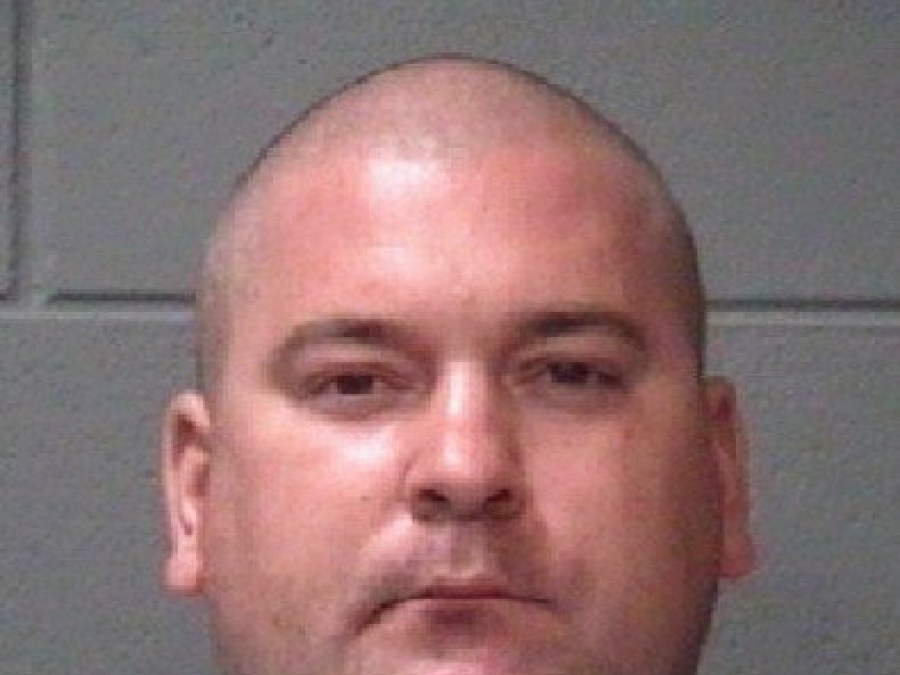
In Onslow County superior court today, former Marine Corps Sergeant, Christopher Skaggs appeared at 11 a.m. this morning for the guilty plea. Skaggs was charged in the first-degree murder in the multiple-shooting death of his wife Jordan Skaggs back in July of 2014. Him pleading guilty to first-degree murder carries a mandatory life imprisonment sentencing without parole. 18 months ago the defense attorneys requested a plea deal for 25 years and it was denied. The state prosecution said in court today that there was no other way in this, there are only two options, life without parole or the death penalty.
[Submitted by Melissa Elaine Oakley]
---
https://onslowbeat.com/2018/03/28/former-marine-sentenced-in-wifes-murder/



